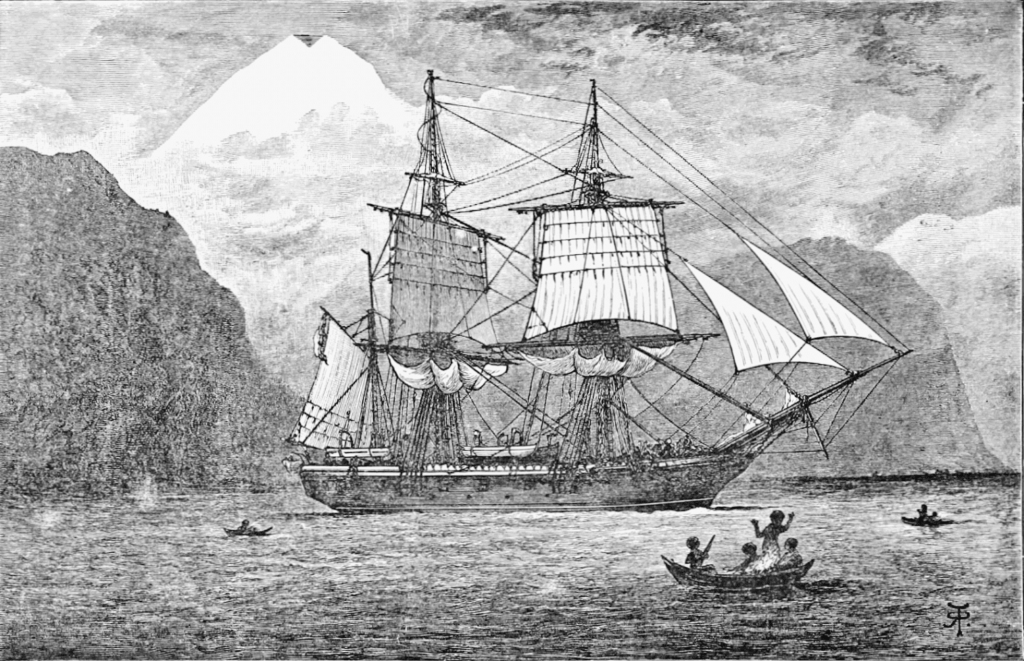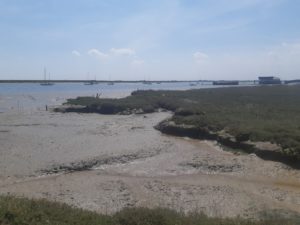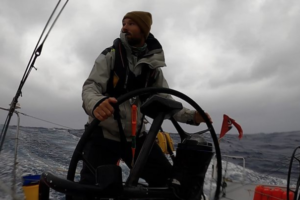Rare ship dock where Darwin’s Beagle spent her final days gains heritage protection

The remains of a rare 19th century dock, built to accommodate HMS Beagle when it was serving as a Coastguard Watch Vessel in Essex, is now protected as a nationally important site. The submerged mud berth on the River Roach near Paglesham has been designated as a scheduled monument by the Department for Digital, Culture, Media and Sport on the advice of Historic England.
HMS Beagle was first launched in May 1820 from Woolwich Dockyard on the River Thames, and is most famous for being the vessel on which Charles Darwin made the observations necessary to develop his theory of natural selection. Following three far-flung exploratory voyages, the Beagle was refitted as a static watch vessel for the Essex Coastguard in 1845 serving to curb smuggling until it was sold for scrap in 1870.
In 2019, Historic England commissioned Wessex Archaeology to investigate the Paglesham mudflats in Rochford, thought to be the last resting place of the Beagle, ahead of the bicentenary of the vessel’s launch in May 2020. Maritime archaeologists confirmed the location of the mud dock and a brick slope or ‘hard’ using geophysical surveys and an aerial survey by drone.
The Rochford mud dock – a specifically cut mooring place in which a vessel rests on the bottom at low tide – was constructed sometime after 1847. Its outline, location and size match the indentation of the riverbank recorded on early Ordnance Survey maps. Despite what was probably once a common feature on England’s major waterways, particularly in the absence of designed dockyards, the locations of purpose-built mud docks are not well known. Only five mud docks are recorded in England.
A mud dock of the same type can be seen in John Constable’s 1815 painting ‘Boat-Building near Flatford Mill’ on display at the Victoria & Albert Museum, London. Mud berths included the need for shoring to stabilise the sides, and wooden stocks to support the ship. The sloped brick hard extended alongside the dock and ship’s side allowing people access down the foreshore to low water.
Documentary evidence tells us the Beagle was in the Rochford dock in 1870 when it was sold. It was likely dismantled here, and lots of the material would have been taken and repurposed elsewhere. Remains of the Beagle may survive within the dock, though no more archaeological work is currently planned. Previous surveys undertaken by a team led by the late Dr Robert Prescott from the University of St Andrews in 2003, and more recent work by the University of Southampton, showed that there are the remains of potentially substantial material in the dock – this could be parts of the dock itself, another vessel possibly associated with the local oyster fishery, or the Beagle.

Paglesham mudflats
“This is a fascinating example of a rare piece of maritime history, linked to one of the world’s most famous ships. We are glad to see this site in a quiet corner of Essex given national protection,” says Duncan Wilson, Historic England Chief Executive.
“We are extremely proud that this prestigious vessel ended her days on our shores, and that the site will now be recognised as a scheduled monument. As we are able, Rochford District Council will be recommencing our plans for the commemoration of 2020 as the 200th anniversary of the launch of this famous vessel,” says Rochford District Council’s Portfolio Holder for Enterprise, Councillor Simon Wootton.
“Rochford District Council will be creating a lasting commemoration to the ship in the form of a new observation platform at the RSPB Wallasea Island Wild Coast Project, overlooking the River Roach where the ship was moored.
“From this spot, thanks to the support of the National Lottery Heritage Fund, visitors will be able to immerse themselves in a Computer Generated Image (CGI) Tour of the HMS Beagle simply by holding their smartphones or tablets up to the horizon.”
History
HMS Beagle was launched in 1820 and participated in celebrations of the coronation of King George IV the following year, but is most famous for its three voyages of exploration to survey the coasts of Patagonia, Tierra del Fuego and Australia.
In August 1831, aged 22, Charles Darwin was offered the opportunity by his botany professor to join the HMS Beagle on a voyage around the world to create sea-charts. The offer had been made to two others before Darwin, but they had turned it down.
The young Captain FitzRoy was looking for a scientific-minded gentleman who would also be a companion. The voyage would be an excellent opportunity to collect, observe, and write about flora, fauna and geology in South America and beyond.
HMS Beagle set sail from Plymouth in December 1831. The voyage was to last for two years but lasted almost five. The Beagle returned to Plymouth in October 1836. Darwin’s diary was later published as ‘The Voyage of the Beagle’ in 1839. Darwin became the most influential scientist, writer and thinker on evolution in part thanks to his time on the Beagle.
Although the voyage had been commissioned by the admiralty, Captain FitzRoy had insisted on many alterations to the ship, including adding a third mast to make it more stable at sea and creating space for the many surveying instruments on board.
In 1845, the Beagle transferred to the Customs Service to control smuggling on the Essex Coast as a static coastguard watch vessel. Its masts were removed and it was renamed CGWV No. 7. Moored mid-river in Paglesham Reach, the ship kept watch over part of the River Roach Tidal River System. Census records from the 19th century show that the ship accommodated seven coastguard officers and their families, who would have integrated with the local community.
In 1870, the ship was sold to be broken up in the dock. The lower portion of the vessel (comprising the keel, futtocks and inner planking) would have been difficult to remove from the mud and therefore potentially survives. It is believed that the upper timbers above the waterline were repurposed and used in local building construction.











